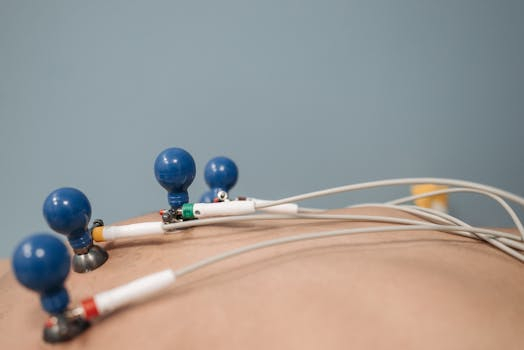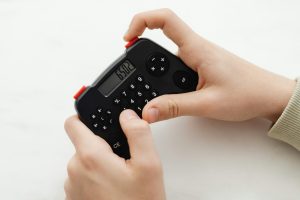Wearable ECG and Blood Oxygen Monitors: Health on Your Wrist
Welcome to a world where technology and health intersect seamlessly with the emergence of wearable ECG and blood oxygen monitors. These innovative devices allow individuals to closely monitor their heart and oxygen levels in real-time, all from the convenience of their wrist. With the global population becoming increasingly health-conscious, it’s no surprise that these monitors have gained massive popularity. In this article, we will dive into the world of wearable ECG and blood oxygen monitors, exploring their features, benefits, and how they are transforming the way we monitor our health. So, let’s strap on our smartwatches and take a closer look at these remarkable devices that bring health to our wrists.
The Evolution of Wearable ECG and Blood Oxygen Monitors
Traditionally, the measurement of heart and oxygen levels requires a visit to the doctor’s office, where complicated and bulky equipment is used. However, with advancements in technology, these readings can now be obtained effortlessly through wearable devices. The concept of measuring vital signs through wearable technology first emerged in the early 1980s with the introduction of smartwatches. However, it wasn’t until the 2010s that wearable ECG and blood oxygen monitors became widely available to the public.
What is Wearable ECG?
ECG (electrocardiogram) is a diagnostic test that uses electrodes to record the electrical activity of the heart. It provides valuable information about the heart’s function, including the rhythm and rate. With wearable ECG monitors, individuals can get a snapshot of their heart’s activity anytime and anywhere, without the need for a medical professional. These devices come with multiple electrodes that securely attach to the skin, providing a continuous reading of the heart’s activity. They can detect abnormalities in heart rate and rhythm, potentially helping individuals prevent serious conditions such as heart attacks and strokes.
What is Wearable Blood Oxygen Monitor?
On the other hand, a blood oxygen monitor is a device that measures the level of oxygen in the blood. It works by emitting two wavelengths of light that penetrate the skin to measure the color of the blood. This measurement is known as oxygen saturation, and it is expressed as a percentage of the maximum amount of oxygen that hemoglobin in the blood can carry. Normal oxygen saturation levels range between 95-100%. However, a reading below 90% may indicate a breathing problem or other underlying health issues. Thus, being able to track blood oxygen levels through wearable devices can be life-changing for individuals with respiratory conditions or those who regularly engage in high-intensity activities.
Benefits of Wearable ECG and Blood Oxygen Monitors
The convenience and ease of use are the two biggest advantages of wearable ECG and blood oxygen monitors. These devices have made monitoring vital signs more accessible and more manageable for individuals, especially those at risk of heart or respiratory conditions. Furthermore, the continuous readings provided by these monitors offer a more comprehensive and accurate picture of an individual’s health than a one-time measurement at the doctor’s office. They also empower individuals to take control of their health by allowing them to identify patterns and fluctuations in their heart and oxygen levels and make necessary lifestyle adjustments to maintain optimal health.
Integration with other Health Technologies
Wearable ECG and blood oxygen monitors are not standalone devices. They can be integrated with other health technologies such as fitness trackers, sleep monitors, and health apps. This integration offers a holistic view of an individual’s health, providing valuable insights into how different factors and activities affect their vital signs. For example, syncing a wearable ECG monitor with a fitness tracker can show how exercise impacts an individual’s heart rate and rhythm, thus helping them optimise their fitness routine.
Continuous Monitoring for At-Risk Individuals
Individuals with pre-existing heart conditions or those at risk of developing them can greatly benefit from wearable ECG and blood oxygen monitors. These devices provide continuous monitoring, allowing for early detection of any abnormalities or warning signs. This can lead to timely interventions and potentially life-saving measures.
Limitations and Challenges
While wearable ECG and blood oxygen monitors offer remarkable convenience and benefits, they also have their limitations and challenges. The accuracy of the readings may be affected by factors such as device placement, skin condition, and external noise. Moreover, these devices are not meant to replace medical professionals, and individuals should not make any medical decisions without consulting their doctor. There are also concerns over data privacy and security, as these devices collect and store personal health information.
Overcoming Challenges and Expanding Possibilities
To address the accuracy and reliability concerns, manufacturers are continuously improving the technology used in wearable ECG and blood oxygen monitors. With the integration of AI and machine learning, these devices are becoming smarter and more accurate. Moreover, regulations are in place to ensure the security and privacy of personal health data collected by these devices. As for expanding possibilities, researchers are exploring the use of wearable ECG and blood oxygen monitors in diagnosing and managing a wider range of health conditions. The potential for early detection and intervention in conditions such as sleep apnea, chronic obstructive pulmonary disease (COPD), and even mental health disorders is being explored.
In Conclusion
Wearable ECG and blood oxygen monitors are truly transforming the way we monitor our health. They offer remarkable convenience, continuous monitoring, and integration with other technologies. While they may have their limitations and challenges, these devices are constantly evolving and expanding possibilities. With the power to provide real-time and continuous data, wearable ECG and blood oxygen monitors bring health to our wrists, enabling us to take control of our wellbeing like never before.










